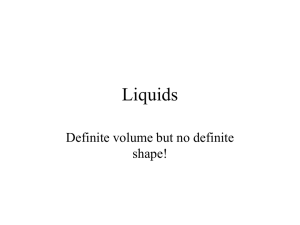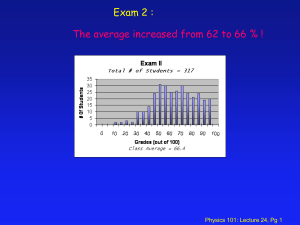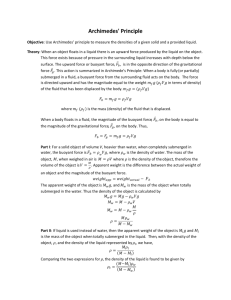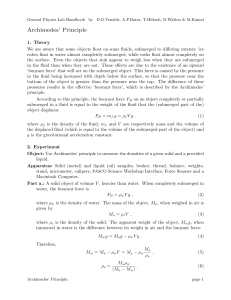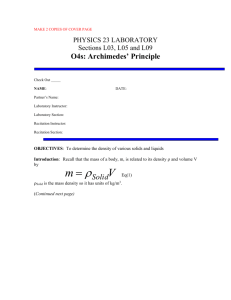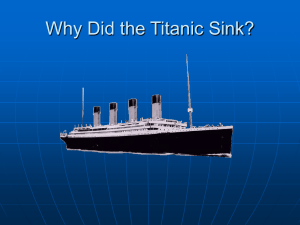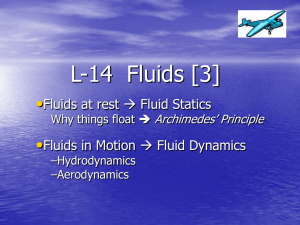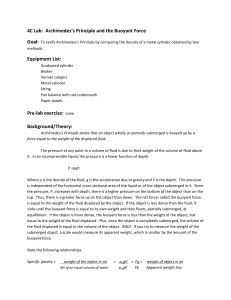Archimedes` principle.
advertisement
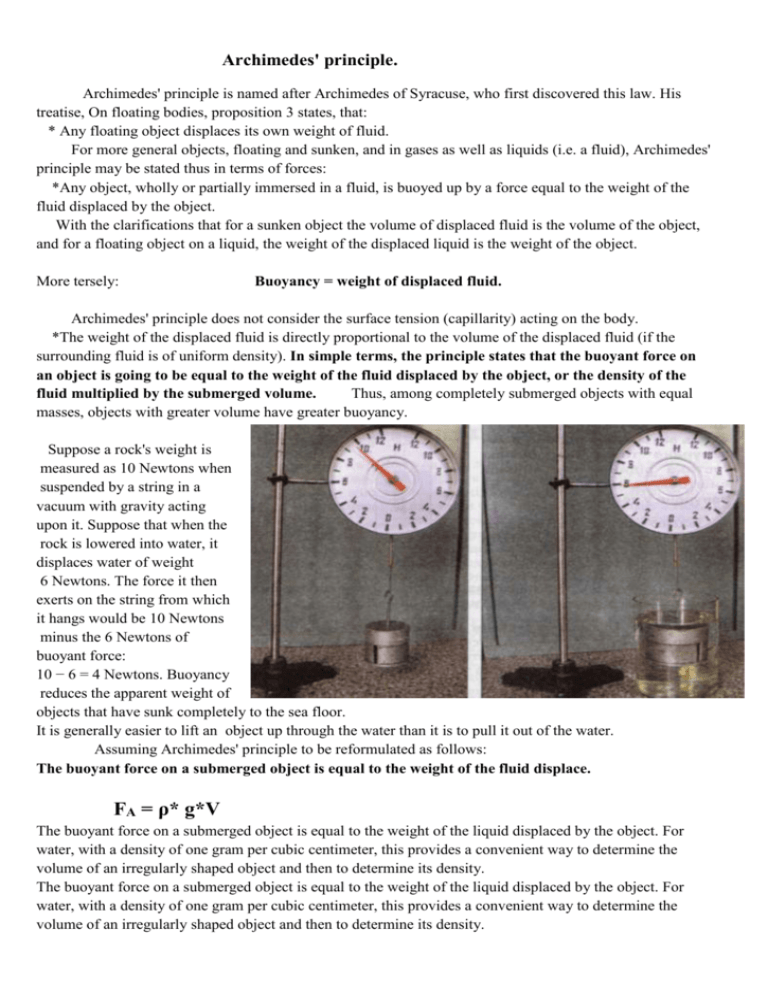
Archimedes' principle. Archimedes' principle is named after Archimedes of Syracuse, who first discovered this law. His treatise, On floating bodies, proposition 3 states, that: * Any floating object displaces its own weight of fluid. For more general objects, floating and sunken, and in gases as well as liquids (i.e. a fluid), Archimedes' principle may be stated thus in terms of forces: *Any object, wholly or partially immersed in a fluid, is buoyed up by a force equal to the weight of the fluid displaced by the object. With the clarifications that for a sunken object the volume of displaced fluid is the volume of the object, and for a floating object on a liquid, the weight of the displaced liquid is the weight of the object. More tersely: Buoyancy = weight of displaced fluid. Archimedes' principle does not consider the surface tension (capillarity) acting on the body. *The weight of the displaced fluid is directly proportional to the volume of the displaced fluid (if the surrounding fluid is of uniform density). In simple terms, the principle states that the buoyant force on an object is going to be equal to the weight of the fluid displaced by the object, or the density of the fluid multiplied by the submerged volume. Thus, among completely submerged objects with equal masses, objects with greater volume have greater buoyancy. Suppose a rock's weight is measured as 10 Newtons when suspended by a string in a vacuum with gravity acting upon it. Suppose that when the rock is lowered into water, it displaces water of weight 6 Newtons. The force it then exerts on the string from which it hangs would be 10 Newtons minus the 6 Newtons of buoyant force: 10 − 6 = 4 Newtons. Buoyancy reduces the apparent weight of objects that have sunk completely to the sea floor. It is generally easier to lift an object up through the water than it is to pull it out of the water. Assuming Archimedes' principle to be reformulated as follows: The buoyant force on a submerged object is equal to the weight of the fluid displace. FA = ρ* g*V The buoyant force on a submerged object is equal to the weight of the liquid displaced by the object. For water, with a density of one gram per cubic centimeter, this provides a convenient way to determine the volume of an irregularly shaped object and then to determine its density. The buoyant force on a submerged object is equal to the weight of the liquid displaced by the object. For water, with a density of one gram per cubic centimeter, this provides a convenient way to determine the volume of an irregularly shaped object and then to determine its density. Example: If you drop wood into water buoyancy will keep it afloat. http://en.wikipedia.org/wiki/Archimedes http://en.wikipedia.org/wiki/Buoyancy


